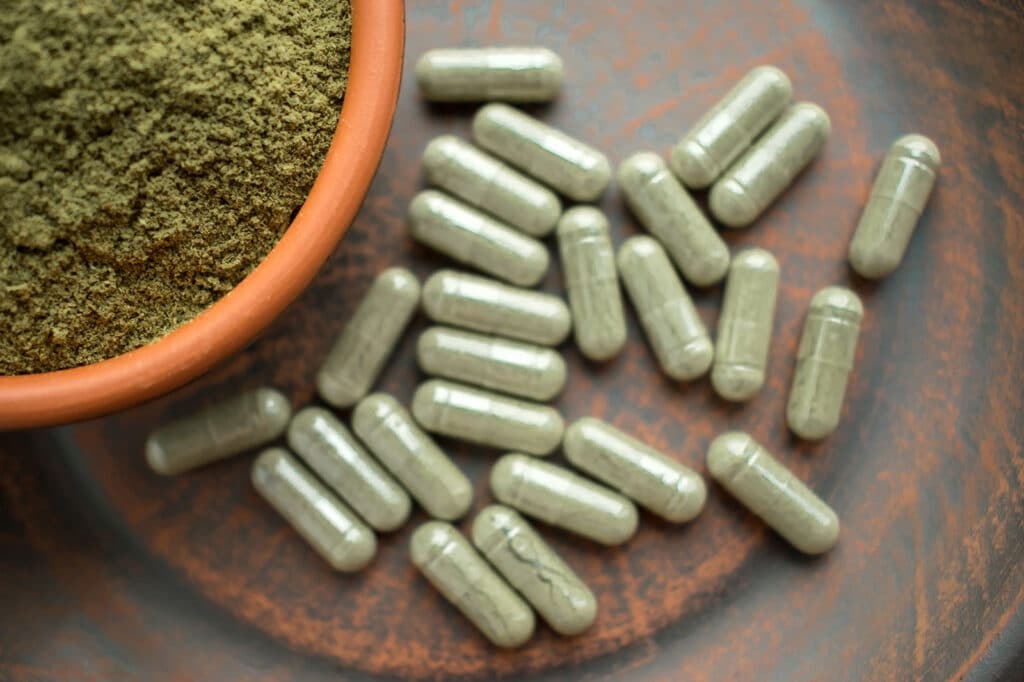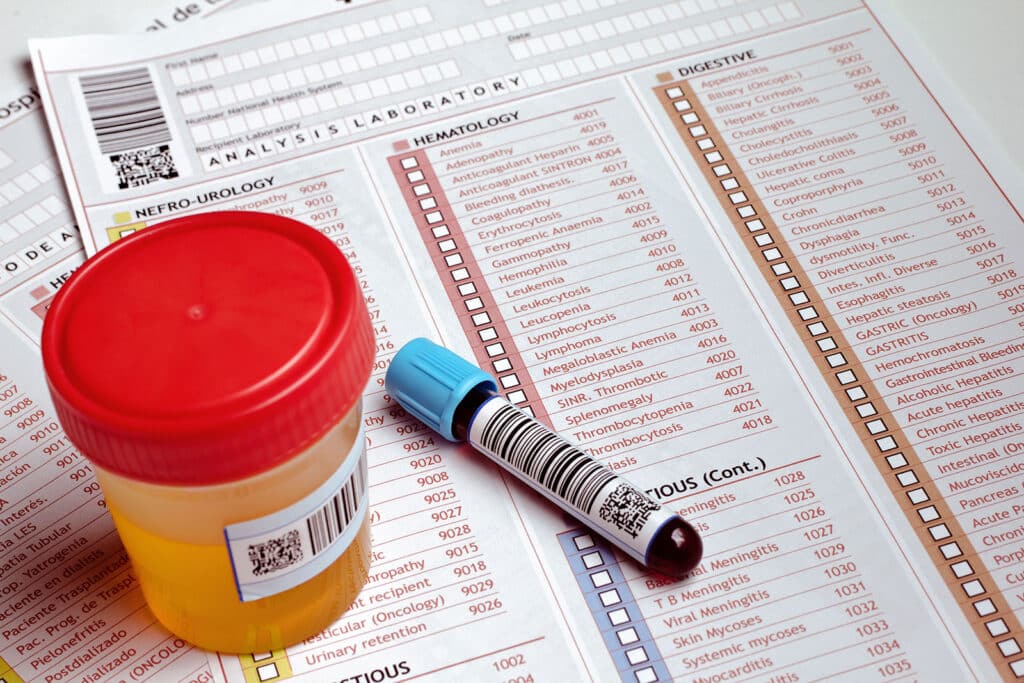A lot of people believe Kratom is a useful herbal drug supplement that’s relatively harmless when compared to other drugs. This popular yet incorrect belief stems from both historical and modern usage.
In Southeast Asia, people have historically and traditionally used parts of the tropical evergreen (Mitragyna speciosa or Kratom), a plant related to common coffee plants, to treat a variety of health issues and as a recreational stimulant that alters the mind and physical sensations. They consume powder with liquid or capsules, chew gum or leaves, or smoke parts of it. Its other common names include Biak, mitragyna, ketum, Thang, and Thom.

Kratom has properties similar to caffeine, opiates, and opioids, primarily via an active indole-based alkaloid known as mitragynine and additional properties from other alkaloids and chemicals. It’s been used to help people feel energetic, balance or improve their mood, pain-relieving, restore appetite, and treat fatigue. At low doses, it tends to have stimulant effects. Given its opioid properties, many people use it to combat their addiction problems as well. They take higher amounts to mimic other drugs, provide sedation benefits, and lower their pain. It helps to fill the void temporarily while they wean themselves off more powerful, similar drugs. The effects of Kratom may be heightened if someone takes it on an empty stomach.
Experts have found that Kratom often causes problems for addicts and non-addicts alike, especially with larger doses. This has wide-ranging effects. It also can build tolerance, which means that a person must use an increasingly larger amount of it each time to receive the same benefits. As a result, Kratom is often abused and is a gateway drug that leads people to mix it with substances (alcohol, caffeine, cough syrup, sedatives, and illegal drugs) that increase negative side effects, abuse other drugs, and even participate in the illegal buying and selling of drugs.
People often ask about Kratom drug testing because they have concerns about a positive Kratom or opioid test result during a drug screening by an employer or law enforcement. Misuse of Kratom also often leads to serious health and other problems, including but not limited to:
- Agitation and Irritation
- Aggressive and Violent Behavior
- Bad Decision Making
- Brain Swelling
- Breathing Difficulty
- Cognitive Decline
- Child Custody Loss
- Chills
- Chronic Unemployment
- Constipation
- Drowsiness
- Excessive Thirst
- Financial Damage
- GI difficulties
- Hallucinations
- Headache
- Inflammation
- Insomnia
- Job Loss
- Legal Troubles
- Liver Toxicity and Damage
- Muscle Spasms
- Nausea
- Opioid Withdrawal Symptoms
- Psychosis
- Relationship Conflicts or Divorce
- Respiratory Difficulties
- Runny Nose
- Seizures
- Sexual Dysfunction
- Thyroid Problems
- Vomiting
- Watery Eyes
- Weight Loss
In the most severe cases, typically when Kratom is mixed with alcohol and certain other substances, and in people with underlying health conditions or poor health, Kratom can cause coma and death.
This guide outlines everything you need to know about Kratom usage, addiction, and drug tests that can help you or a loved one understand more about this highly addictive drug and the options available to improve outcomes.

Table of Contents
Kratom and Drug Tests
Kratom typically isn’t detectable in many of the standard tests used by employers and others during standard drug screenings, including the standard SAMHSA 5-panel test that’s primarily used to catch the use of amphetamines, cocaine, opiates, marijuana, and PCPs. The best test looks specifically for Kratom, but most employers and others don’t use a custom test.
Standard 10-panel, 12-panel, and 16-panel tests can detect Kratom metabolites for approximately 7 days before Kratom leaves the body. Common tests for Kratom require blood, hair, or urine. Saliva tests don’t provide useful results for substance use.
| Test Type | Substances Detected | Detection Time | Sample Required | Effectiveness for Kratom |
|---|---|---|---|---|
| 10-panel | Kratom metabolites | ~7 days | Blood, Hair, Urine | Good |
| 12-panel | Kratom metabolites | ~7 days | Blood, Hair, Urine | Good |
| 16-panel | Kratom metabolites | ~7 days | Blood, Hair, Urine | Good |
| Saliva | Kratom metabolites | – | Saliva | Poor |
Factors Affecting Kratom Detection in Drug Tests
According to one of the most recent papers about Kratom usage (“Understanding Kratom Use: A Guide for Healthcare Providers” by Swogger et al.), a review of past studies found that people who took Kratom 22 or more times weekly at a dosage of at least 5 g experienced side effects with dependence, tolerance, and withdrawal all similar to other opioids but with a shorter duration. As with opioids, higher dosages, such as 8 g and above, and longer usage make the symptoms worsen and extend the period of withdrawal symptoms and the detection window for drug tests.

These issues occur because Kratom is fat-soluble, which means that body fat and the liver store it for a period after usage that’s longer than water-soluble substances. It can take approximately an hour for the GI tract to absorb mitragynine. This means that the half-life of Kratom ranges between 24 and 40 hours. That said, how long does Kratom stay in the body? The total elimination of Kratom from the body usually happens within 6 to 9 days as long as it isn’t impacted by other factors that extend the detection window further beyond the time of the last usage, including:
- Age (drugs metabolize slower as a person ages)
- Body Fat (retains metabolites longer)
- Diet (high-fat foods increase absorption and slow elimination)
- Dosage (higher doses take longer for the body to eliminate it)
- Dehydration (decreases urination and slows elimination)
- Genetics (some people just retain it longer)
- Leaves (some plants have higher concentrations than others)
- Liver Disease (slows the metabolism)
- Mixed Non-Kratom Drugs (slow or speed up elimination)
- stomach Contents (full stomach extends the detection window)
Types of Drug Tests for Kratom
The three most recognized tests (blood, hair, and urine) vary in their detection windows. Blood tests typically make it possible for laboratory technicians to detect Kratom from 24 hours after usage up to approximately 7 days. Hair follicle tests can detect it for up to approximately 90 days. The detection window for urinalysis lasts approximately 9 days, but labs can detect Kratom within 6 hours of usage.
Urinalysis is the most widely used of the three tests, even though blood tests are often the more precise option. The reason for this practice comes down to the following:
- Urine testing inexpensively detects a wide variety of drugs.
- There’s no painful or fearful blood draw necessary.
- The test merely requires a person to urinate into a container.
- The six-hour detection window is perfect for work and crime spot checks.
False Positives on Drug Tests and Legal Implications
Kratom is detectable in some tests that look for opioids. An employer or member of law enforcement might incorrectly believe that the person who took the drug test is taking illegal substances, such as fentanyl, heroin, or synthetic opioids, or abusing legal prescription drugs like codeine, morphine, and oxycodone.
The majority of employers in the United States have strict rules about drug abuse and usage. Anyone who abuses drugs can become mentally, physically, or verbally harmful to others. They’re also at higher risk of having heavy machinery and other accidents. A positive test result can lead an employer to suspend or even terminate a worker’s position within their company. Members of law enforcement might even consider any test result an indication that the person buys or sells illegal drugs, which can result in charges and time in jail.

Many medical and scientific experts believe that Kratom hasn’t been properly classified by the U.S. Food and Drug Administration (FDA) or law enforcement. They consider it a true opioid because it activates opioid receptors. Kratom is such a problematic drug that the U.S. Drug Enforcement Administration (DEA) attempted to reclassify it in 2016 as a controlled substance. Representatives of the agency proclaimed that it didn’t actually offer real health or medical benefits. Complaints and interference by Kratom users and others eventually forced the agency to not move forward with its plan.
As of April 2023, Kratom usage isn’t illegal in the United States at the federal level except within the military, but several states have made it illegal for a person to buy, use, possess, or sell Kratom (Alabama, Arkansas, Indiana, Rhode Island, Vermont and Wisconsin). Several cities and counties have also banned it.
Conclusion
Kratom isn’t as useful as an herbal supplement as many people think. It’s dangerous and deadly. As with any opioid drug, its usage can eventually tear apart a person’s entire life. It can adversely affect their health, finances, relationships, and lifespan.
At Garden State Treatment Center, we know that Kratom abuse and addiction are serious and that support is critical to recovery. Our concerned team of counselors, therapists, and other staff members provides various educational, guidance, and therapeutic services to help people discover the best treatment options and solutions for their situations. We do more than treat substance abuse and addiction. We offer custom, one-on-one, and group experiences to help people improve their lives. We address concerns about future drug tests as well.
You are not alone on this journey. We can help you gain access to as many tools as needed through a multi-layered approach. To learn more about the importance of understanding drug testing methods, factors affecting Kratom detection, and services for yourself or a loved one, please speak with a caring, professional team member today.
FAQ
Does Kratom show up on a probation drug test?
Does kratom have opiates that would show up on drug tests?
Is there a Kratom specific drug test?
Published on: 2020-08-25
Updated on: 2025-06-05



